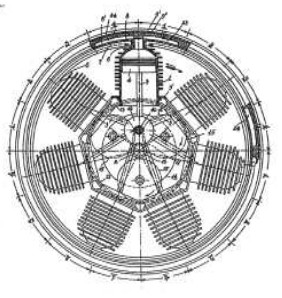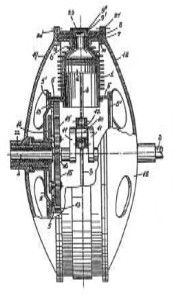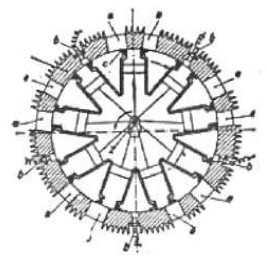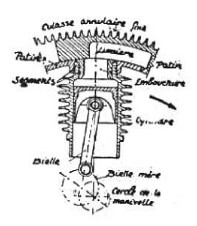Updated: 09-May-2024
In 1919, the Hungarian engineer Ignacz Sklenar obtained the Austrian patent for a rotary engine that was exceptional for its originality.
-It was a rare 7-cylinder engine in which the heads of these cylinders rotated within a ring that had the corresponding ports to carry out the work of ordinary valves.

“Sklenar engine patent drawing”

“Side view of the engine”
-As we can see, from the gears behind the crankshaft, it is a bi-rotary engine, rotating the cylinders in one direction and the propeller rotating in the opposite direction.

“9-cylinder engine version from 1937”
-This scheme is the one that appears in “Les Ailes”. Intended for powers of 1,000 HP, it was also bi-rotary, that is, the propeller rotated in the opposite direction to the group of cylinders. This system is also used by Burlat, EJC or Ligez birotary machines. See.
-But the overhead valve system of the type of ports in a circular ring is only in a similar engine like the Mawen, which acquired the Sklenar licenses in the 1930s.

“Cylinder head-ring detail”
-The sealing problems were enormous. But the idea was sold because Pratt & Whitney obtained the license to develop these engines.
-In France, two models were tested - apparently by Mathis -, the 5-cylinder 490 cc one and the 9-cylinder one with just over 4 liters.
Engines of SKLENAR
Model: 7 cyl. rotary
Arquitecture:
Cooling:
Total Displacement:
Bore / Stroke: x
Power:
Weight:
Model: 9 cyl. rotary
Arquitecture:
Cooling:
Total Displacement:
Bore / Stroke: x
Power:
Weight:


